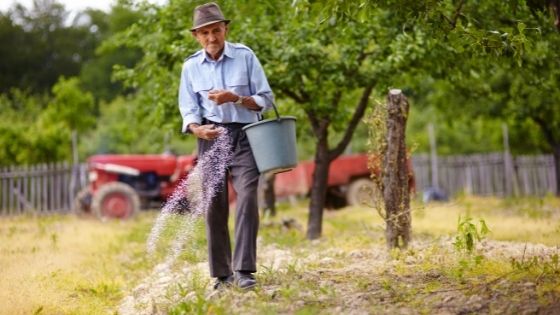While it’s true that all the nutrients plants need to foster healthy growth should be present in the soil, that’s rarely the case. These days, most topsoil is more or less devoid of nutrients, which means cannabis growers must add them, usually in the form of fertilizer. Read on to find out what steps to take in fertilizing cannabis plants during each part of their growth cycle.
Step One: Start Feeding Seedlings at the Right Time
The best time to start fertilizing your cannabis plants is between the third and fourth weeks of their seedling stage. When the plants first germinate and begin to grow, they get 100% of the nutrients required to start life on the right foot from the seeds and absorb water through the leaves. In other words, very young cannabis plants couldn’t absorb the nutrients in fertilizer.
It’s only once cannabis seedlings have developed three or four true leaves that they’re ready to start being fed. Technically, this is the start of the vegetative growth phase.
Step Two: Start With a Light Fertilizer
The first week after seedlings enter the vegetative stage, start them off on a light fertilizer with an NPK ratio of around 2:1:2. A lighter fertilizer will be less likely to cause problems with nutrient burn in young, fragile plants. There are also plenty of growers that report fantastic results from using 4:2:3 fertilizer to kickstart the plants’ growth, but be aware that this strategy comes with added risks.
Step Three: Increase Nutrient Availability
When the plants are in the middle of the vegetative stage, usually around six weeks after germinating or two to three weeks after they leave the seedling stage, growers should increase nutrient availability significantly. At this point, the plants will be strong enough to handle a 10:5:7 fertilizer, which will provide the nutrients required to foster the growth of strong, healthy foliage. Access to extra nitrogen during the middle of the vegetative stage also allows plants to develop extra bud sites.
Step Four: Prepare for Flowering
During the last week of the vegetative stage, start getting the plants ready for the flowering stage by reducing nitrogen availability. Try using a balanced 7:7:7 fertilizer. Lowering the nitrogen levels will help the plants prepare themselves for the switch to bloom booster during the flowering stage.
Step Five: Add Potassium
Once they enter the flowering stage, cannabis plants don’t need as much nitrogen, which primarily fuels vegetative growth. Instead, they need extra potassium to promote the development of huge, resinous flowers. Most growers feed their plants increasing amounts of fertilizer, always with a higher potassium concentration, for the first half of flowering, ending at around 6:10:15 by halfway through the stage.
Step Six: Smooth the Transition to Harvest
During the last week or two of the flowering stage, most growers start driving down their plants’ nutrient levels. Switching to a milder 4:7:10 fertilizer helps to smooth the transition to harvest and improves the taste of the final product.
Prepare for the 2022 Season
Now is the time for new and experienced growers alike to start preparing for the 2022 season. Start seeds if they haven’t been planted yet, purchase fertilizer or nutrient solutions and other soil amendments, and come up with a plan for the growing season ahead. The growing season is always hectic, and a little planning goes a long way.

















